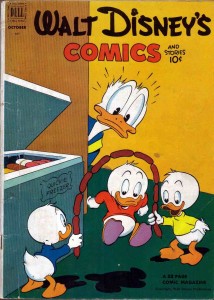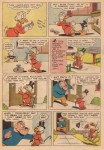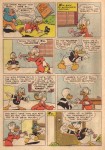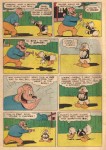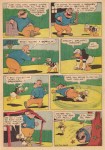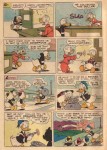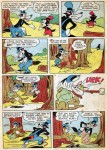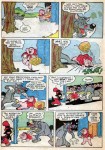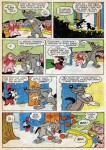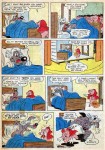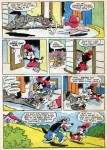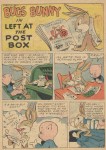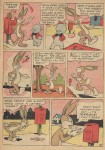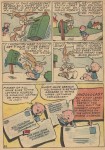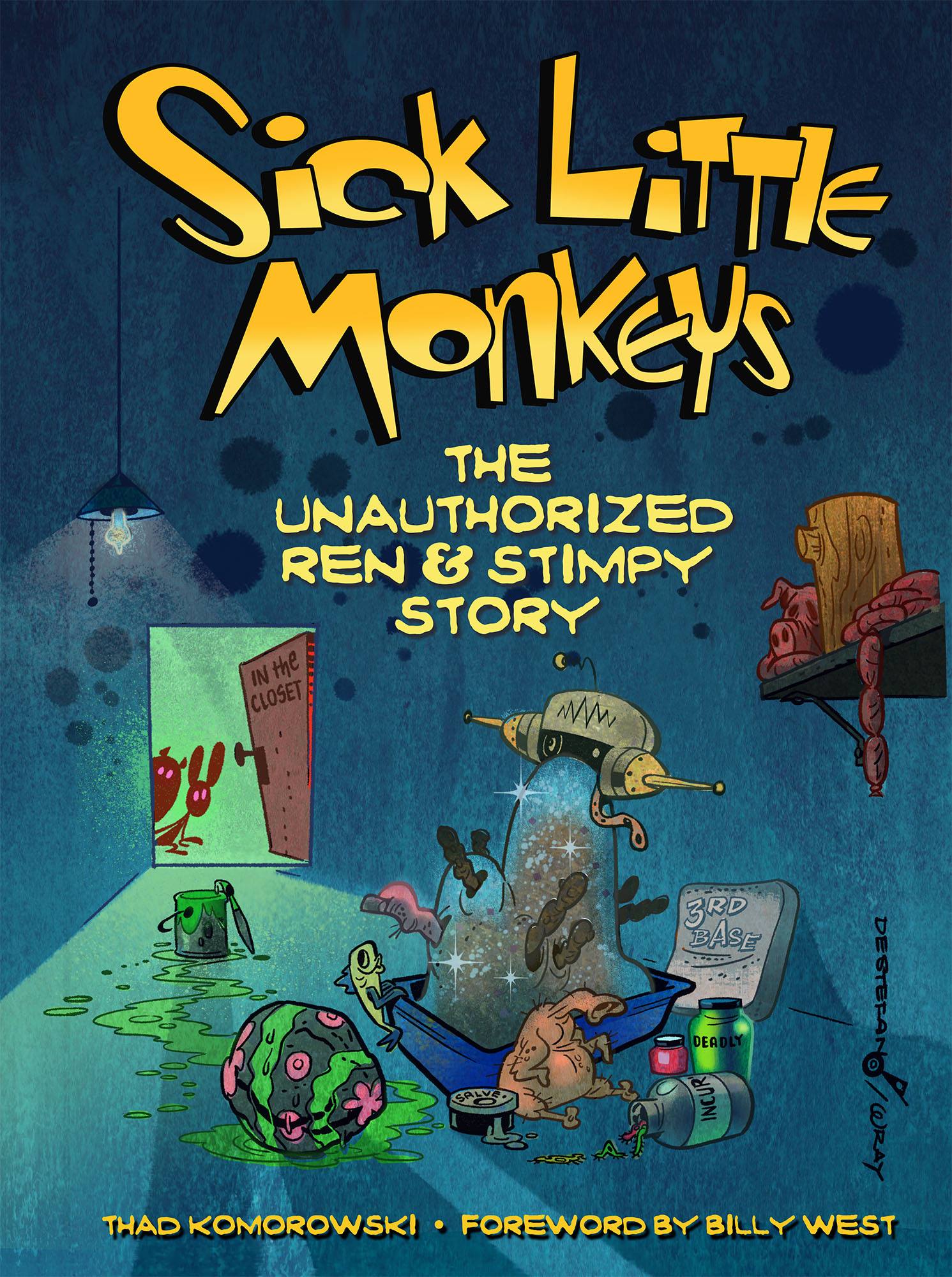Lord, am I tired. But it’s a good tired. I was chatting with David Gerstein this evening, one of the few opportunities I have where it’s socially acceptable to geek out over what I love most. The conversation, of course, turned to Disney comics, and specifically what we’d like to run if anyone in America ever picks up the license again.
As long-time readers of this site know, I readily admit to not being a fan of many of the Disney animated cartoons. Beyond the 1930s, very little of them engage me in any capacity. The Disney comic books, on the other hand, resonate with me in a completely different way. In the absence of having to shoehorn faux-Chaplin acting via overlong, unfunny sequences, the comic medium forced the creators to cut to the chase. A refreshingly enjoyable method of storytelling evolved out of this system, and is still alive and well to this date (outside of North America, naturally).
As everyone knows, the man who flourished most spectacularly was Carl Barks. He was someone who understood the complexities of humanity and could deliver incredibly multi-layered, adult stories in a simplistic manner that engaged children. While endlessly entertaining on their own, the Barks Duck stories are not the only Disney comics worth reading. They are inarguably the best, but there is no denying that the ‘other’ guys are part of the Disney comics experience. I’ve discussed Floyd Gottfredson’s newspaper strips numerous times, and had the pleasure of contributing some write-ups to the upcoming Fantagraphics volume coming out in October. His spritely and charismatic interpretation of Mickey Mouse was beyond anything of the Disney animators’ grasp (and I include Freddie Moore in this, sorry, guys).
This post is about neither Mickey nor Donald, however. It’s about the quirky “Wolf” universe that emerged as one of the longest running secondary features in Walt Disney’s Comics & Stories in 1945. You might remember that the Big Bad Wolf in Disney’s animated Three Little Pigs cartoons had three look-a-like sons; savage hellions animated with flair by Norm Ferguson.
There was no mistaking those guys for the titular character of the Li’l Bad Wolf strip, originated by artist/writer Carl Buettner and editor Chase Craig. Big Bad was given the moniker of Zeke Wolf, and his offspring reduced to a single entity. The strip was a classic example of the “sonny is different from daddy” routine, with Li’l [Come to think of it, did Li’l Bad Wolf have an actual first name? Or did Zeke really name him “Li’l”?] always failing to follow in Zeke’s footsteps: he wants to do good deeds, go to school, and worst, be friends with the Three Little Pigs.
It sounds like the perfect scenario for a classic horror mag or an issue of MAD: a father trying to kill and eat his son’s playmates. Regrettably, the Western cartoonists played this straight, with zero satire, for many years. Zeke himself is the epitomization of Rural White America for kids: he is considered an utter failure and despised by the entire forest community, which only proves in his mind that he’s a successful Big Bad Wolf. Sounds familiar.
The strip was no Barks Donald or Stanley Lulu, but at its best, it was quite funny and certainly several notches above standard Dell fare. For this jaded reader, once I finished the Wolf story in a back issue of WDC&S (which was normally printed immediately after the Barks ten-pager), it was time to put the comic away and move on to something else.
The best of the Wolf cartoonists was Gil Turner, who wrote and drew dozens of the stories in the late 1940s and 1950s. He was an animator for Friz Freleng at Schlesinger’s for a number of years and obviously learned everything he knew about drawing these characters from Pigs in a Polka and Little Red Riding Rabbit, rather than the ‘approved’ Disney model sheets.
This is as fine an example of Turner’s work as any and has never been reprinted in America, hence why I chose to highlight it. I don’t know if it’s Turner’s script, though it certainly reads like one of his. It might be what the hip scholars of today call “meta”: Zeke tries to crash Li’l Wolf’s school play of Little Red Riding Hood by dressing as – the wolf.
For better or worse, here’s the story as it appeared in Walt Disney’s Comics & Stories #104 (May 1949).
I do not apologize for this post. See you next month.

